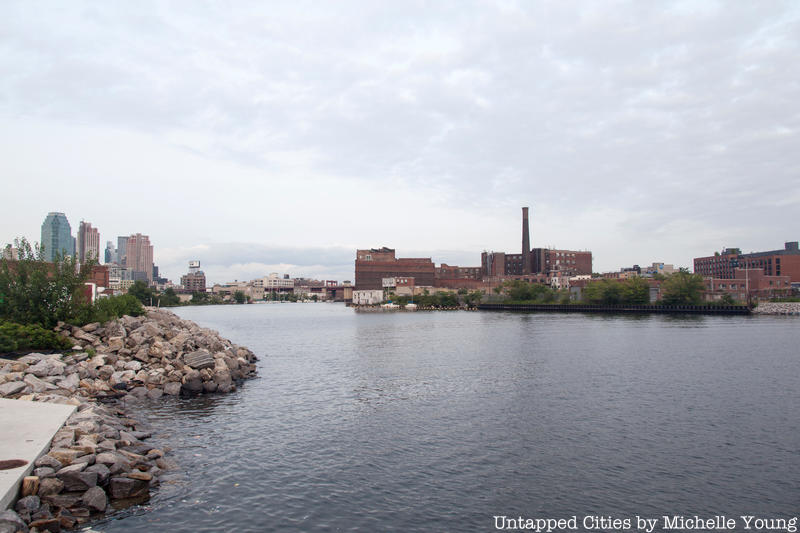
While most New Yorkers are familiar with the Gowanus Canal – the pollution, and the ongoing discussions concerning its cleanup efforts – less are aware of the equally (if not more) polluted Newtown Creek. Located in Greenpoint, Brooklyn, this three-and-a-half-mile-long estuary used to be one of the most heavily used waterways in the country, making it one of the most polluted as well. In fact, the creek is the site of one of the largest oil spills in U.S history – the culmination of decades of oil leakage. The creek is currently undergoing cleanup efforts after it received a Superfund from the United States Environmental Protection Agency (EPA) in 2010. As the clean up efforts continue, EPA contractors are sure to dig up some interesting, and potentially disturbing, facts from the creek’s past.
In the meantime, here’s our own list of secrets about Newtown Creek:
10. There Was an Explosion at Greenpoint
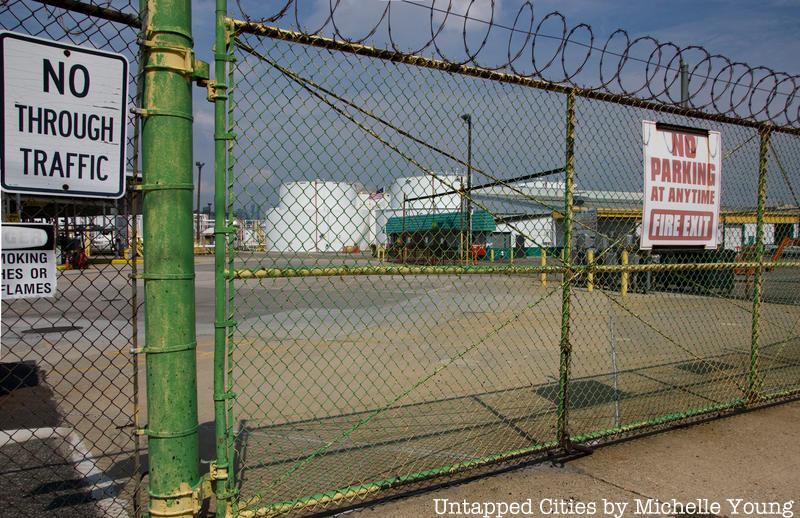
On October 5th, 1950, an explosion rocked Greenpoint, Brooklyn, ripping a 10-foot-wide hole out of the pavement at the junction of Manhattan Avenue and Huron. It sent concrete shrapnel flying, blew 25 manhole covers up to three stories high and shattered windows in over 500 buildings. While there were a few minor injuries, it was remarkable that no one was killed or severely hurt.
The subsequent investigation concluded that the spontaneous explosion had been caused by petroleum and other industrial pollutants that had either leaked from storage bunkers along the creek or been deliberately been poured into the neighborhood’s soil and water. Unknown to the investigators of the time, the explosion was the first sign of a massive oil spill that lurked underneath.
9. The Newtown Creek Oil Spill is One of the Largest in U.S History
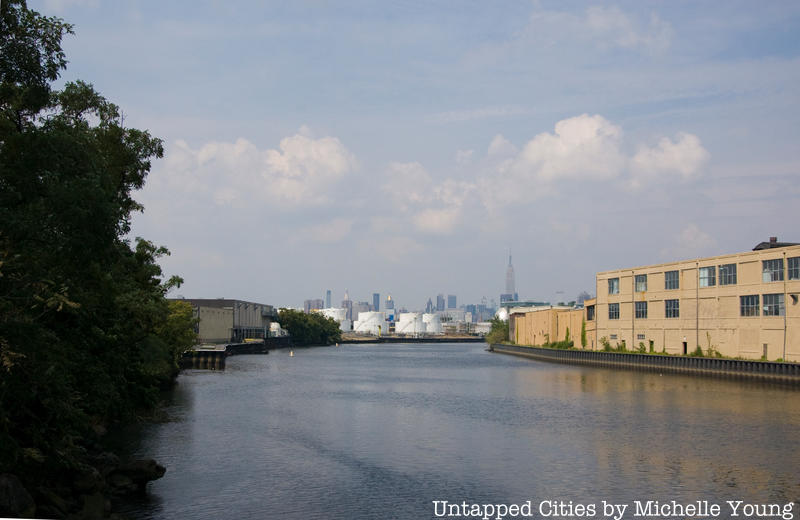
After the Greenpoint explosion in 1950, the entailing investigation concluded that the blast was instigated by chemicals which had been leaking from industrial facilities in Greenpoint since the 19th century. However, no efforts were made to clean up the contamination and it continued to leak into the creek unabated.
Until 1966, Mobil (currently ExxonMobil) had over 35 facilities in the area. In 1978, a United States Coast Guard helicopter on a routine patrol spotted a streak of petroleum flowing into the creek. It was eventually discovered that, over the course of the decade, between 17 to 30 million gallons of oil and petroleum had leaked from the 1,491 sites that operated in the area. That is twice as large as the Exxon Valdez disaster which released 11 million gallons of crude oil off the coast of Alaska, and 9 million gallons more than the oil spills that covered the coast of New Orleans after Hurricane Katrina. The contamination area also exceeded 50 acres, making it one of the largest oil spills in U.S history.
In 2010, the United States Environmental Protection Agency (EPA) declared the Creek a Superfund site, and ExxonMobil, one of the main polluters, paid $25 million to help with the cleanup. Since then, ExxonMobil, BP, and Chevron have pumped out roughly 12 million gallons of oil –what is estimated to be half of the pollution – from the canal and surrounding area.
8. Cleanup Crew May Find Cesium-137 in the Creek
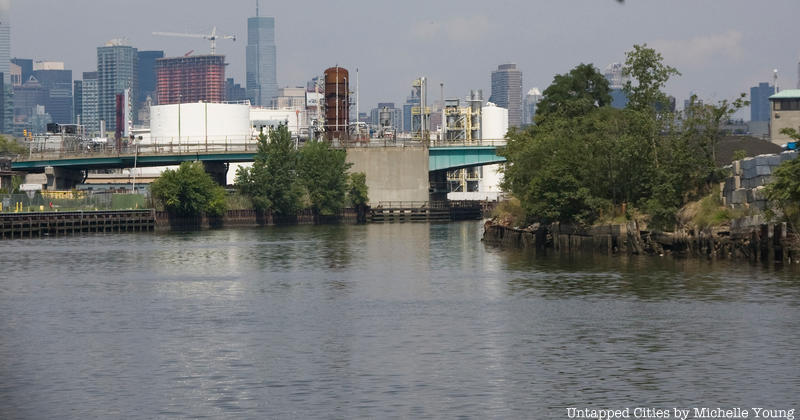
The bottom of the Newtown Creek contains a thick layer of residue, up to 25-feet thick in some cases. The viscous layer, which locals refer to as “black mayonnaise,” is the culmination of the unobstructed dumping of waste from 1,491 sites, 93 of which were still operational as of 2010. As EPA contractors work to cleanup the bottom of the canal, they expect to encounter numerous harmful substances, such as arsenic, polychorinated biphenyls, and even cesium-137, leftover from atmospheric testing of nuclear weapons in the sixties. Moreover, tests conducted by ExxonMobil in the Summer of 2006 and 2007 revealed that are potentially explosive concentrations of methane gas underneath the intersection of Bridgewater Street, Apollo Street, and Norman Avenue.
7. Someone Swam the Entire Length of Newtown Creek
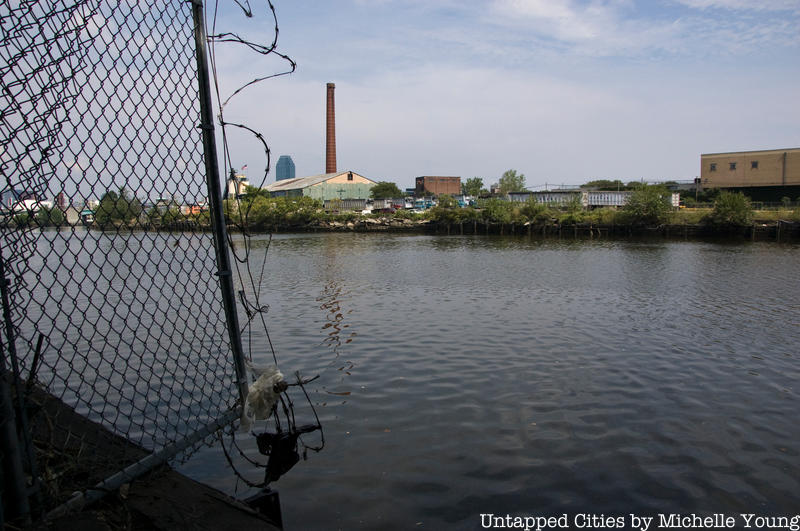
On December 23rd, 2015, Clean Water Advocate Christopher Swain swam the entire length of the canal, thus becoming the first man in history to do so. Donning a full-body protective suit, goggles, earplugs, and swim cap, Swain took on the fetid, extremely noxious waters of the canal in order to draw attention to the polluted waterway. As a clean water advocate, Swain has had a history of swimming in waterways to raise awareness; he swam the entire 315-mile length of the Hudson in 2004, and took on the Gowanus Canal two months before swimming the Newtown Creek. Despite his record for swimming in infested waterways, Swain admitted that, “It was probably the most disgusting swim [he’d] ever done.”
6. Even Today, the Creek is Used to Dump Raw Sewage
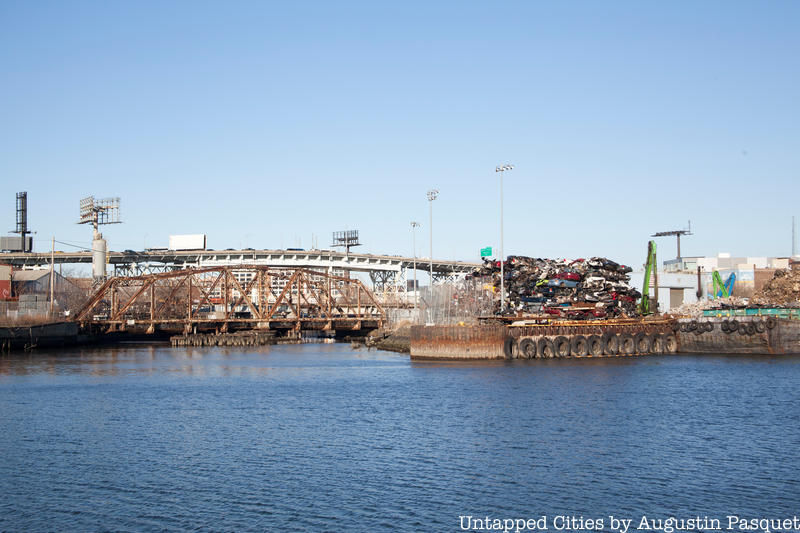
Ever since 1866, New York City has dumped raw sewage into the Canal. Currently, there are dozens of sites along the creek where sewage is dumped whenever the wastewater treatment plant becomes overwhelmed. Newtown Creek Wastewater Treatment Plant underwent a multi-billion dollar renovation in 2010 which increased its capacity and efficacy in handling sewage. However, despite being the largest wastewater treatment plant in New York City, the plant is overwhelmed frequently by rainfall.
According to Newtown Creek Alliance, at the head of East Branch tributary of the creek near Metropolitan and Onderdonk avenues, 980,000 gallons of raw sewage are released on roughly 69 occasions throughout the year. Newtown Creek Alliance recently published a few videos on their Facebook page of sewage being dumped into the canal.
5. The Creek Once Smelled Like a “Burning Cow”
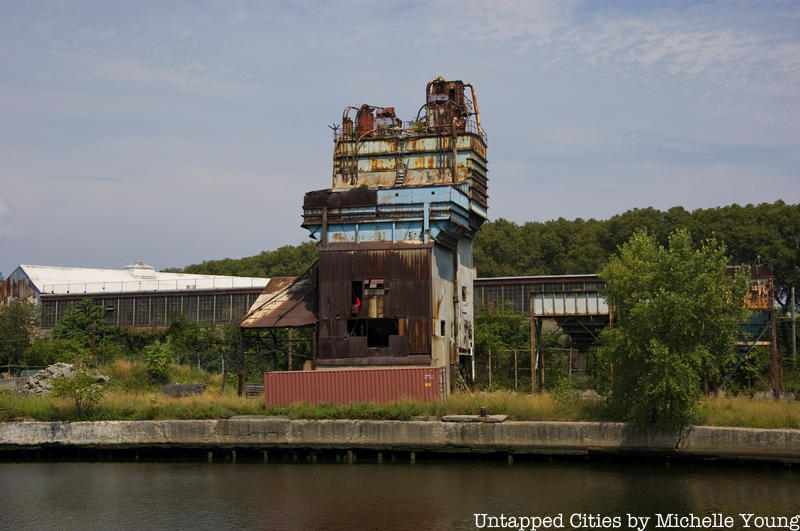
As though the ghastly smells emanating from the gasoline, benzene, and raw sewage weren’t enough, the creek was also contaminated with animal fat. One of the most notorious stenches that permeated the neighborhood in 1855 originated from the Peter Van Iderstine plant, which turned the entrails of butchered animals (including at least one ten-ton circus elephant) into animal feed, fertilizer, and glue.
The company was charged with dumping animal fat into the canal in 1973, and it consequently closed in 1977. An EPA official told the New York Times that people had called their office complaining of “a smell like a burning cow.”
4. Hundreds of Mysterious Bags of Black Goo Were Found
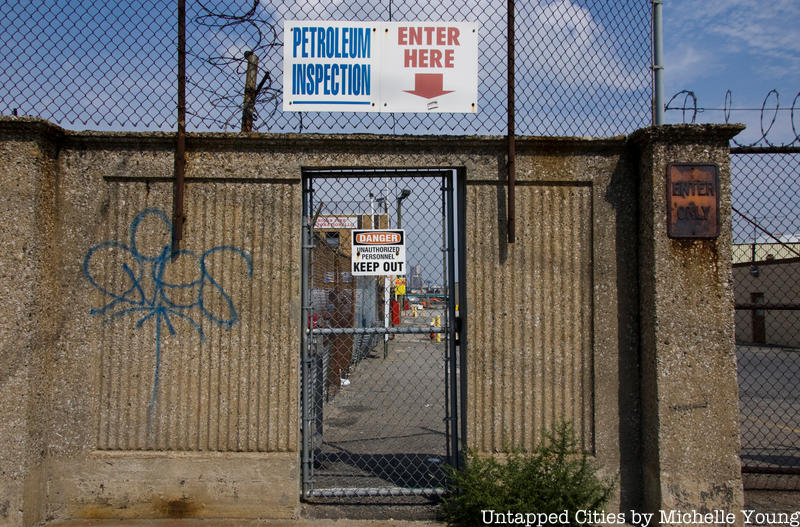
Last month on September 14th, environmentalists patrolling Newtown Creek made a bizarre discovery – 216 small, tightly-wrapped, plastic bags, containing a mystery substance, floating together. Riverkeeper Patrol Boat Captain John Lipscomb came across the strange find just before 7:30 a.m. near Pulaski Bridge.
“They had a little bit of residue in them. That sort of black very fine material, like fine sand,” he said. While the Department of Environmental Conservation sent a spill response engineer, Lipscomb doesn’t believe the mystery of the bags will ever be solved. He stated, “It would be great fun if someone reading the Eagle’s story or our blog post had some kind of information to lead us to understand what happened here.”
3. Last Frontier, an Art Gallery, Overlooks the Creek
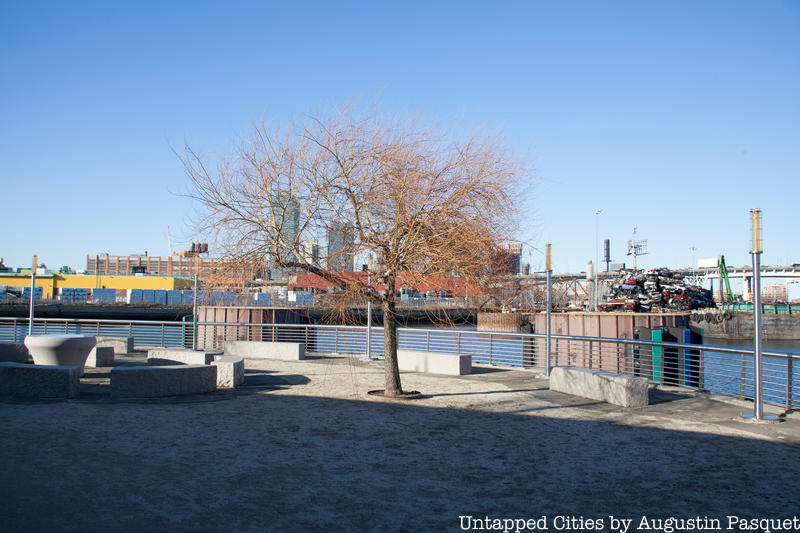
Next door to the Newtown Creek Wastewater Treatment plant in a nondescript, 100-year-old industrial building is the art gallery Last Frontier. Founded in October 2015 by accomplished Norwegian artist Sol Kjøk, the art space and work studio serves as a combined work space and presentation arena for international artists across various disciplines. The building itself, which also houses Broadway Stages, actually became a Superfund site after it was discovered to be contaminated.
2. Jello Got its Start at the Creek
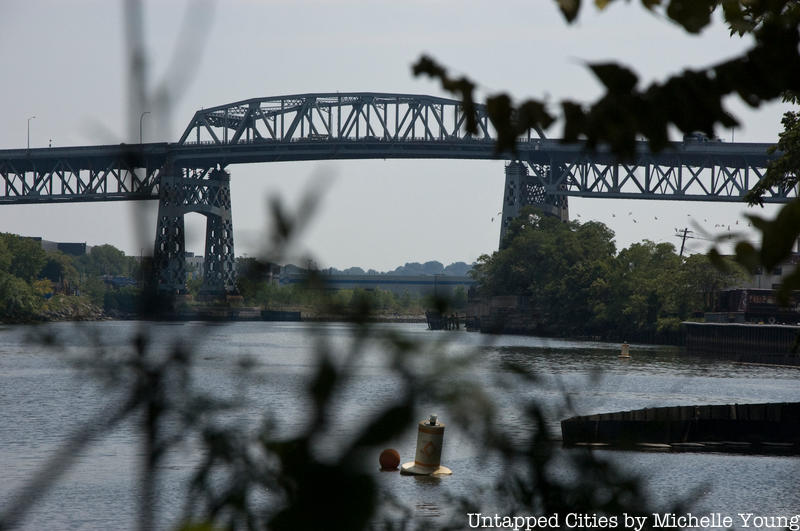
Peter Cooper, acclaimed industrialist of the 19th century and founder of Cooper Union, owned a glue factory on Newtown Creek. Being the brilliant chemist that he was, Cooper worked on utilizing every part of animals for use in his products. By 1870, his factory specialized in the refinement of glues, albumen and aspic. Cooper also invented the process by which gelatin can be powderized and flavored. With help from his wife, who added fruit to his clarified gelatin, he patented his brand, Jell-O, in 1845.
1. Rockefeller’s Standard Oil Company Owned a Site at Newtown Creek

After moving to New York City around 1850-1851, Charles Pratt, a pioneer of the petroleum industry, established his kerosene refinery, Astral Oil Works on the Newtown Creek. He founded his oil company, Charles Pratt and Company, in 1867 alongside his then partner Henry Rogers. In the early 1870’s, however, Pratt and Rogers became involved in conflicts with John D. Rockefeller’s infamous South Improvement Company, which was obtaining favorable net rates from railroads through rebates.
To remedy the situation, Rockefeller eventually approached Charles Pratt with a plan of cooperation and consolidation. Charles Pratt and Company (including Astral Oil) joined Rockefeller’s South Improvement Company in 1874.
Next, check out The Top 12 Historical Secrets of the Gowanus Canal and read about the Proposal to Clean Gowanus Canal.





